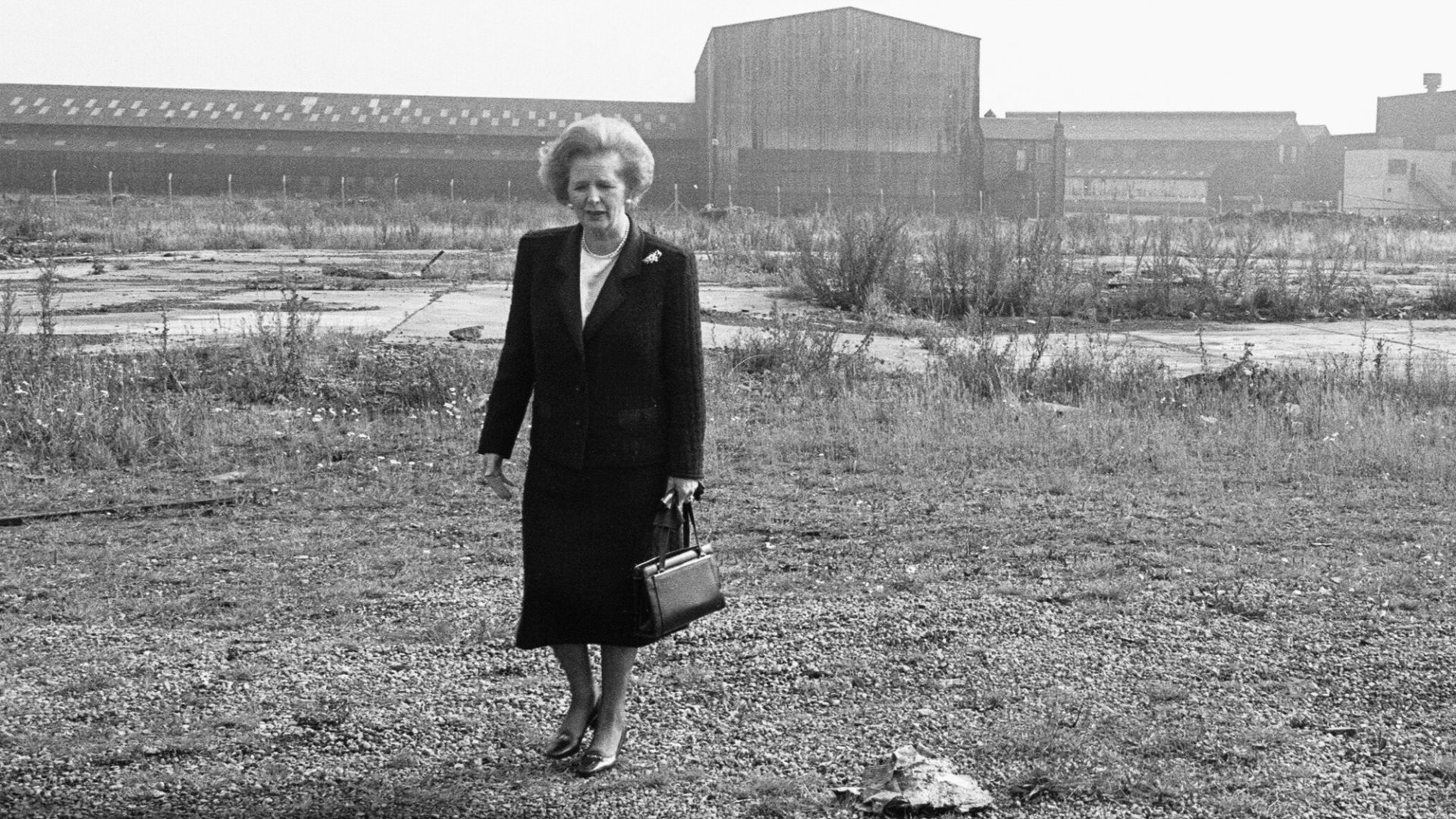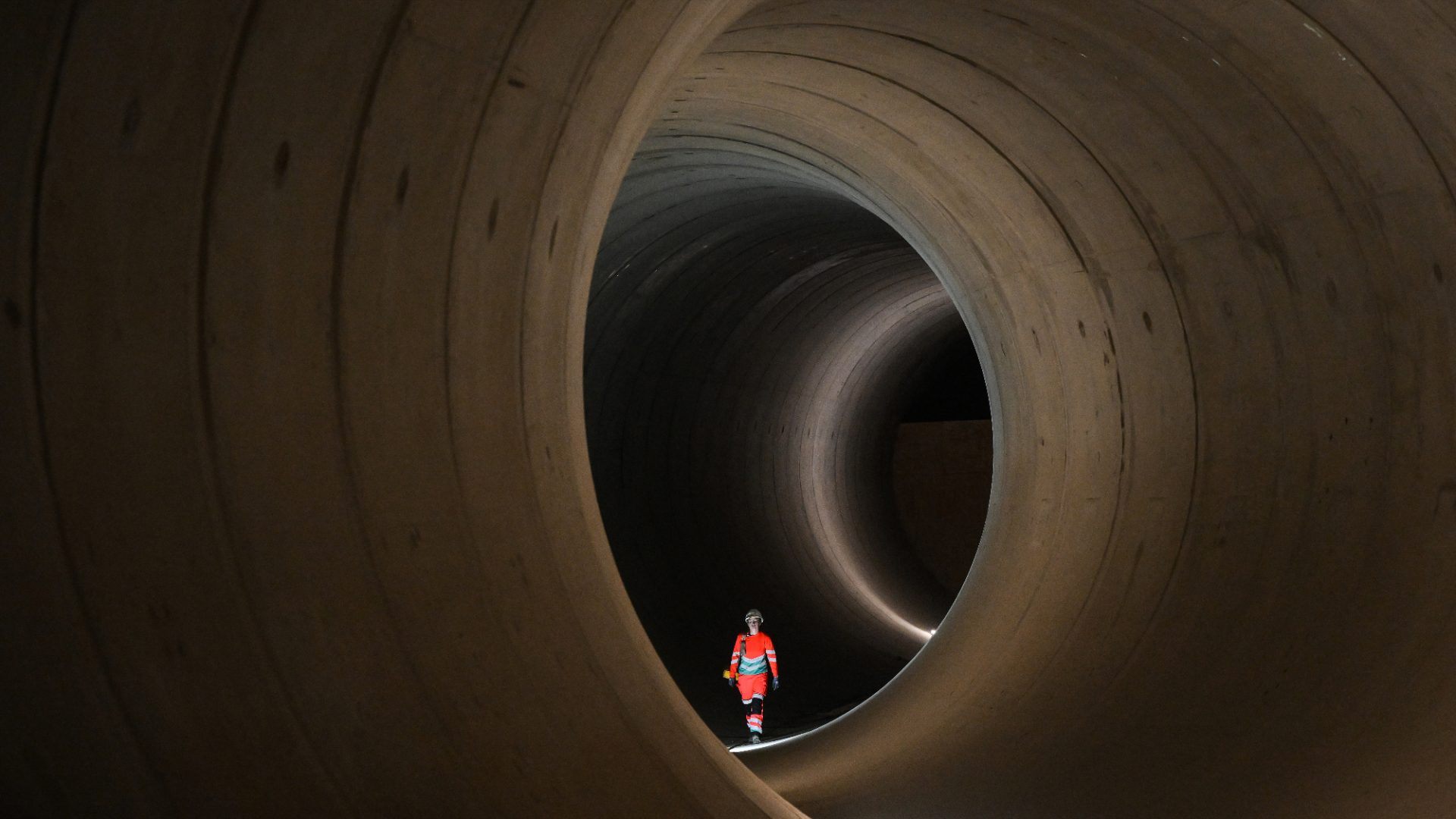Bleary-eyed after being woken during the night by torrential rain hammering down on my London roof, I read a startling news story. Southern Water, which supplies large parts of Hampshire, Sussex and Kent, was so worried about running short of the product it sells that it was thinking of importing additional supplies by tanker from Norway.
Yet, as a link in the article helpfully reminded me, the 12 months to last February were the wettest since records began in 1766. And in September parts of southern England saw three and a half times their average rainfall for the month.
How can it be that, when the stuff is falling from the skies in biblical quantities, parts of Britain are in danger of running out of water?
And what’s more, how can it be that among the regions most at risk is London? Thames Water, Britain’s largest water company, which serves most of the capital, forecasts that if nothing is done, then by 2050 there will be a shortfall of 1bn litres a day. Affinity Water, which serves much of London’s northern outskirts, says it could be 449m litres short.
One answer to these questions lies in climate change. The increased number of storms and heavy “rainfall events” that are one consequence of climate change are bad news for our water supply because they deliver the wrong sort of rain. Too much falling all at once rapidly saturates the soil, and instead of being absorbed and filtering down to replenish underground aquifers, the rain simply runs off into the nearest water course or drain.
Another answer is population growth. In 1991 there were 6.8 million people living in London. Today the figure is somewhere north of 9 million. They all need water.
History tells us there is nothing new about water shortages in London. Ever since Tudor times the city has been in danger of running dry. When the population quadrupled between 1500 and 1600, there was a serious water famine.
A solution then was provided by a London goldsmith and entrepreneur called Hugh Myddelton. He built the New River, snaking more than 40 miles south across the countryside to bring water from Hertfordshire. He then laid pipes under the city’s streets, encouraged householders to connect up and let them take water – for a fee. The aqueduct, completed in 1613, is still there and, remarkably, still supplies 10% of London’s drinking water.
The New River Company he set up was unbelievably profitable. In the 1980s a historian worked out that if one of its original shareholders had somehow survived right through until it was taken into public ownership in 1904, taking into account nearly 300 years of dividends and the final purchase price, he (and they were all men) would have enjoyed a return on his initial investment of 267% per year.
In the 18th century, London’s water supply was the envy of Europe – no other city brought water to every house. But the water had to be rationed and so the supply was only intermittent. Company turncocks went round turning it on street by street for two or three hours every two or three days.
When a new company, the Grand Junction Waterworks, was launched in 1811 with much fanfare, its incautious promise of a constant supply proved impossible to keep: its water came out of the Grand Junction Canal, and it quickly became clear there wasn’t enough for both boats and people.
Fears that the metropolis might run out of water drove numerous Victorian schemes – some eye-wateringly expensive – to bring supplies from elsewhere: from the Bedfordshire Ouse, from Wales, even from the Lake District, 270 miles away. In the event, their cost meant London was forced to rely for most of its water, as it still does, on the Thames, supplemented by the New River (which gets its water from the River Lea) and by boreholes.
By the end of the Victorian era, enough was being pumped from these sources for all the private water companies serving London to offer constant supply 24 hours a day. But in dry years it remained a challenge: during the droughts of the late 1890s, the East London Waterworks warned customers not to waste water, on pain of a large fine, and implemented temporary cuts in services.
The answer was to build more reservoirs. The Victorians started the process, and it continued in the 20th century. Out to the west of London, especially around Heathrow airport and in the Lea Valley to the north-east are vast holding pens that store water for use in dry spells. The system includes London’s least-known engineering marvel, the Thames-Lea pipeline, the longest tunnel in Europe when it was completed in 1959, which runs for 31km and transfers 550m litres a day from the Thames at Sunbury to the reservoirs in the east.
The last of these enormous ponds, the Queen Mother Reservoir near Datchet, was completed in 1976, nearly half a century ago. It’s a situation repeated across the country: few new reservoirs have been built, even as population and demand have steadily increased.
One reason is Britain’s sclerotic planning system. This is a crowded country and reservoirs take up a lot of space; finding places to put them and then persuading local people, local authorities and ultimately the government to agree is a challenge.
Thames, Southern and Affinity have been trying to construct an enormous new reservoir since 2006 near Abingdon in Oxfordshire. A public inquiry rejected it in 2011, but the water companies have resurrected it as the best way to tackle future shortfalls.
But local residents aren’t keen on a scheme that would drown hundreds of acres of farmland and subject them to years of disruption from construction work. A well-organised campaign group has fought the proposal at every turn.
The other reason for the lack of investment in badly needed water infrastructure is one that accounts not just for water shortages but for many of the other problems now facing our water industry: privatisation.
For much of the city’s history, Londoners depended on private companies for their water. But what constituted a reasonable return for the shareholders was always a controversial question, especially after 1800, when London expanded rapidly and rapacious Regency businessmen moved in to start new water companies, eyeing up the New River’s profits and hoping to make a killing.
During the course of the 19th century, governments and the public gradually learned that leaving something as essential as water supply in the hands of private, profit-making companies – whose first duty was not to the public they served but to their shareholders – was a flawed idea.
So across much of Britain water became a municipal affair, provided by organisations owned and run by local councils. In London a body called the Metropolitan Water Board took over the capital’s eight private suppliers.
It was the publicly owned MWB that built the Thames-Lea pipeline and many of those reservoirs, and made dramatic improvements to water treatment. The board was accountable to local authorities and their rate-payers, and focused not on making money but on providing the best possible service.
The system worked well until the 1970s, when governments eager to keep public borrowing down starved publicly owned water enterprises of the money to invest. The Conservative governments of the 1980s saw privatisation as the answer: private companies could unlock private investment to replace the country’s ageing pipes and treatment works. Thatcher had doubts about the wisdom of putting a natural monopoly like water into private hands, without the discipline of competition to keep the new companies honest. She was persuaded by the promise of strong regulation from a new body, Ofwat, which would limit the companies’ charges and profits and ensure they continued to invest.
For the first 10 years after privatisation in 1989 the new water industry broadly delivered. Much-needed investment duly materialised, while the companies made satisfactory profits and water charges were kept down.
Then the companies – or rather their shareholders – learned how to game the system, wrong-footing the regulator and paying themselves enormous dividends. The money came from borrowing: an analysis by the Financial Times earlier this year concluded that, in the 32 years since they were privatised with zero borrowing, the water companies have racked up a total of £64bn in net debt. Meanwhile, they paid their shareholders all that money and more – £78bn – in dividends. This system has left Thames Water alone holding £16bn of debt, and in need of an emergency £3bn loan – the company was on track to run out of money by Christmas.
Some of that might have gone instead to fix leaking pipes, build reservoirs and increase treatment capacity. The regulator Ofwat was either weak or complicit. As one very senior figure in the water industry put it to me, the companies and the regulator “conspired” between them to keep levels of investment at the very lowest permitted by the rules.
So the mains still leak, and raw sewage is discharged regularly (and often illegally) from overwhelmed treatment works into rivers, streams and the sea because for much of the past 30 years the water industry has prioritised shareholders over the public, just as it did in the 19th century.
Meanwhile all that debt, much of it taken on when interest rates were low, is increasingly unsustainable now that rates have risen. There is a very real possibility of Thames going bust as a result.
There are no quick fixes for London’s water shortage. Persuading people to use less is one approach. But Londoners are not profligate by the standards of other affluent nations. The 146 litres a day they use compares favourably with the figure for Los Angeles, a city built in a semi-desert, where they use 225 litres, much of it on watering lawns, cleaning cars and filling swimming pools.
Fixing the leaks would make an enormous contribution. At present approaching a fifth of all the water that enters Thames Water’s mains never reaches the consumer. But it is costly and disruptive, and Thames’s preferred approach is to leave well alone until something bursts.
Desalination is one way to produce more fresh water. But it is energy-intensive and polluting: the concentrated brine discharged as a waste product is environmentally damaging. Thames built a desalination plant in 2012 next to its Beckton sewage treatment works: it has been mothballed for years.
Too much water is already being abstracted from underground aquifers, causing the chalk streams of the Chilterns and the North and South Downs – a rare and precious habitat – to dry up.
So the only other possibility is to bring water from far away, along modern versions of Hugh Myddelton’s New River. Affinity has a scheme to boost supply by bringing 100m litres a day of treated effluent down the canal network from a sewage works in the Midlands.
The most ambitious proposal involves bringing water from Wales via a pipeline from the River Severn at Tewkesbury to the Thames, then storing it in that enormous reservoir at Abingdon, though the financial, environmental and political challenges are huge: the Welsh are unlikely to sit quietly by and see “their” water syphoned off for London.
As Hugh Myddelton demonstrated, water supply can be a great business – and so it should be when literally everybody has to buy your product. That Britain’s modern water industry has messed up so badly, to the extent that London itself might go short, is a scandal.
Nick Higham’s history of London’s water, The Mercenary River, is published by Headline



